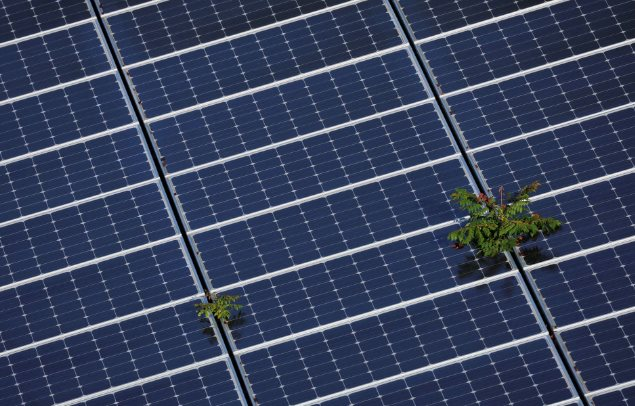This is an important energy “weapon” that China is holding – the US and Europe are both heavily importing to escape the shadow of Russia.
- Tram Ho

Illustration
According to statistics from Bloomberg, in the first 10 months of 2022 alone, Europe imported 17.5 billion euros, equivalent to about 18.75 billion USD, solar energy components and equipment from China, which accounts for 95% of total solar-related imports.
According to two major Chinese solar companies, Trina Solar and Jinko Solar, US imports of solar panels from China have finally increased after months of disruption stemming from law enforcement. new to the use of labor.
Trina Solar told Reuters that more than 900 megawatts of its solar panels have cleared the US customs in the past four months, with less than 1% of those products being held for inspection. That’s about enough capacity to power more than 150,000 homes.
“Trina’s data and supply chain management systems allow us to provide detailed traceability documentation, as required by U.S. Customs,” Trina spokeswoman Melissa Cavanagh said in a statement. an email.

Solar panels installed in the US.
The effort to get rid of fossil fuels – especially supply from Russia after the conflict between Russia and Ukraine caused energy prices to skyrocket, has pushed countries to switch to clean energy, avoid causing crises. supply panic. Solar power is a perfect alternative, but China’s dominance in this energy category is immense.
According to Bloomberg, Chinese companies now control more than 80% of the worldwide solar supply chain, dominating the production of panels and their components. Wind turbines and solar panels currently generate almost enough electricity to power every home in China.
According to the National Energy Administration (NEA), wind and solar power output grew 21% last year to 1,190 terawatt-hours. This figure does not seem to differ too much from the total electricity consumption of the residential area of 1,340 terawatt-hours, up 14% year-on-year as people stay at home more before the epidemic prevention and control measures.
China’s rapid growth is the result of investing hundreds of billions of dollars to meet climate goals and reduce dependence on expensive fossil fuels.
However, according to the International Energy Agency, only 17% of electricity used there was classified as residential in 2020. In the same year, households accounted for 29% of electricity consumption in Japan. and 39% in the US. In China, factories still dominate, with industry accounting for 60% of total electricity demand.
So even if clean energy could cover nearly every home, China’s generators would still need to burn more fossil fuels and emit more greenhouse gases to keep up with what’s been proven. was a year of relatively dismal economic growth.
The economy is expected to expand much faster this year after the zero Covid policy is lifted. That means emissions will rise again even with enough wind and sun to keep stoves and refrigerators running in every home.
Summary: Bloomberg, Reuters
Source : Genk
